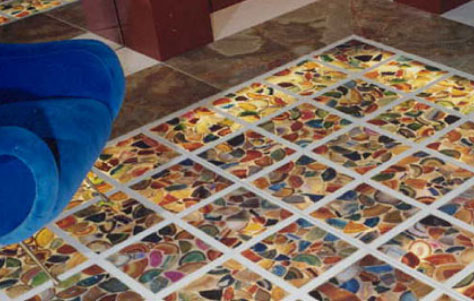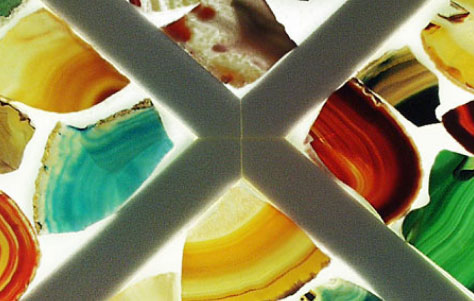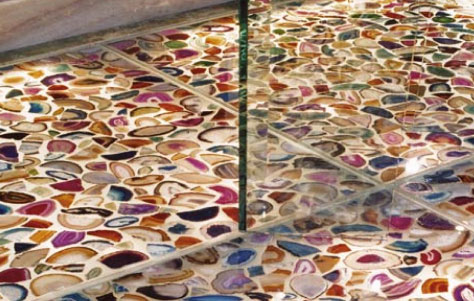Magie di Agate: Semiprecious Stone Flooring
Cobblestone streets are great for an old-fashioned setting, but as the technologically-advanced materials progress, the stone walkways and streets are fewer with further between. Using stones to lay our groundwork, per say, is definitely not obsolete though. It’s just taking new shape. These days, we’ve shifted from largely uncolored stone streets – like in Sevilla, Spain where I broke two nice pairs of heels in a week while tromping around back in 2005 – to something easier on eyes and the shoes. Take for instance the Magia de Agate from Budri.
Magie di Agate. Designed by Budri.
Light up with the semiprecious stones in the Magia de Agate by Budri.
Made of semiprecious stone fragments, Budri’s line of Magia di Agate flooring of their popular Woogie Collection are what they call “pietra dura”, meaning tough or hard stone in Italian. As they state – and exemplify using vivid imagery – the floor’s ‘kaleidoscopic” effect comes from a backlit floor creating a “considerable visual impact”. The texture of the stone makes it an easy modular option, since the Magia di Agate can be manufactured in various sizes, and for both flooring and indoor wall applications.



Back in the 60s, Enzo Budri began his artisan workshop to build stairs, floors, and general materials. After a major overhaul with the advanced technology brought in by his sons Gian Marco and Gian Luca, Budri evolved into the direction of sophisticated techniques. In fact, they have really zeroed in on home design, and are known now for their Inlays and Mosaics used in complicated, larger projects that withstand the test of time and value. Besides using semiprecious stone fragments, the company offers collections of marble and other natural stones products sourced from exclusive locations all around the world. According to their website, “With its 5,900 square meters of manufacturing area and 20 employees, Budri has established itself as a leader in Europe and the number-two company in the world when it comes to production capacity in this specific sector.”




Leave a Reply